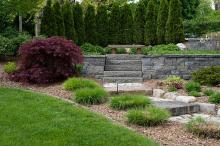Urban Growth and the Need for Structural Stability
As cities continue to expand both horizontally and vertically, the demand for smart infrastructure becomes increasingly critical. Among the unsung heroes of urban development are retaining walls—structures that quietly hold back earth, support elevated roadways, and create usable land in complex urban environments. Retaining wall solutions are integral to modern city planning, providing both functionality and design flexibility in high-density areas where space is limited and terrain varies dramatically.
Making Land Usable in Tight Urban Spaces
One of the most pressing issues in urban development is the lack of flat, buildable land. In many metropolitan regions, hillsides, riverbanks, and uneven ground must be converted into stable platforms for roads, buildings, and public spaces. Retaining walls allow engineers and architects to manipulate elevation levels, creating terraces or multilevel structures on previously unusable ground. Whether supporting a parking garage or framing a community park, these walls provide vital support in environments where every square meter counts.
Multi-Functional Infrastructure
In urban planning, efficiency is essential. Retaining walls are no longer just barriers that hold soil—they now serve multiple purposes in compact and complex settings. For instance, a retaining wall can double as a seating area in a city plaza, as noise barriers near highways, or as vertical gardens in eco-friendly developments. These multifunctional retaining wall solutions reduce the need for separate structures, saving space and materials while enhancing usability and aesthetic appeal.
Blending Design with Engineering
Modern cityscapes demand not only strong structures but also appealing environments. Today’s retaining walls are as much about beauty as they are about strength. With advancements in architectural design and material technology, retaining walls can be built using textured concrete, decorative stone veneers, and even integrated lighting. These features allow retaining walls to harmonize with the visual theme of a neighborhood or to stand out as architectural statements. In urban parks, retail districts, and residential developments, retaining walls add character and polish while performing essential structural duties.
Addressing Drainage and Load-Bearing Challenges
Urban landscapes present a unique set of engineering hurdles. Drainage is particularly complex due to impermeable surfaces like roads and sidewalks that increase runoff. Retaining walls in these areas must include advanced drainage systems, such as weep holes, geosynthetic membranes, and built-in channels to manage water flow efficiently. Additionally, urban retaining walls often bear heavy loads from nearby buildings, vehicles, or pedestrian traffic. This requires meticulous structural calculations and reinforcements to ensure long-term stability under constant pressure.
Vertical Expansion and Basement Retaining Walls
With space becoming scarcer, cities are building not just upwards but also downwards. Subterranean construction for basements, parking garages, and metro systems requires strong retaining wall solutions to hold back soil and water while protecting adjacent structures. These vertical retaining walls are typically constructed using reinforced concrete or shotcrete and demand precise engineering to maintain integrity under tremendous earth pressure. In essence, retaining walls makes it possible for urban structures to go below the surface without compromising safety or function.
Sustainable Development and Green Retaining Walls
Sustainability is now a cornerstone of urban development, and retaining walls play a role here too. Green retaining walls or vegetated retaining systems use geotextile fabric and modular planters to create living walls that improve air quality, reduce heat, and add greenery to city environments. These solutions not only stabilize slopes but also contribute to climate resilience by enhancing biodiversity and reducing urban runoff. More cities are incorporating these eco-conscious retaining wall solutions into public infrastructure and private development alike.
Conclusion
In the dynamic and demanding environment of urban development, retaining walls provides indispensable support and versatility. From expanding usable land to supporting subterranean structures and enhancing visual design, retaining wall solutions are foundational to building cities that are safe, functional, and beautiful. As urban landscapes continue to evolve, retaining walls will remain a vital part of constructing the future—layer by layer, wall by wall.
